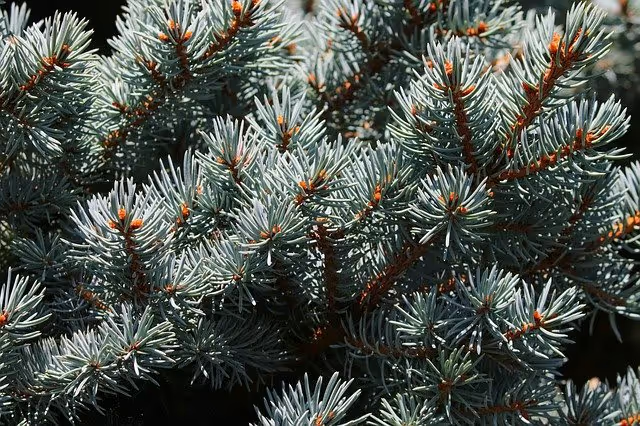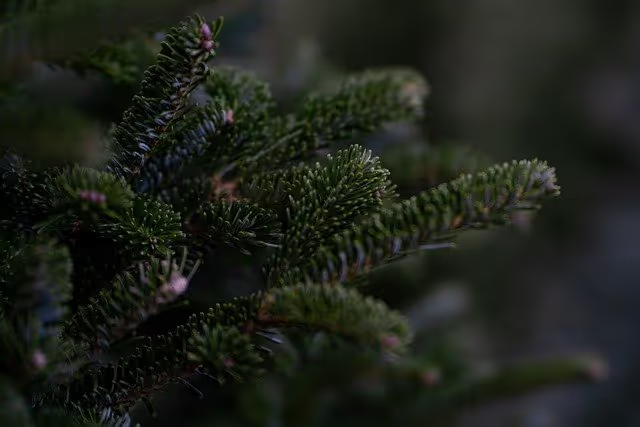Real Life Christmas Trees


With Thanksgiving quickly becoming a distant memory, many of us are turning our attention towards Christmas, which is fast approaching. One important aspect of the festive holiday is the Christmas tree. While some put up an artificial tree that they use year after year, many people enjoy getting a new, fresh, real life Christmas tree every year. Here in Grays Harbor County, we are fortunate to have several species of real life Christmas trees to choose from, and a handful of local farms that grow them. While I have to admit that artificial trees have some benefits (less mess, ability to be used for multiple years, safer for use with energetic and playful pets, etc.), I believe that there is nothing quite like having a fresh, real life Christmas tree in your home during the holiday season. In this post, I'll share some of the reasons why you should consider getting a real life Christmas tree, and take a look at the five most commonly grown types of Christmas trees in our region.
One of the main reasons to consider getting a real life Christmas tree is that they infuse your home with a fresh Christmas tree scent that no artificial tree, air freshener or scented candle can recreate. Another reason to get a real life Christmas tree is that they are fully biodegradable, and can be recycled once the season is over. Once recycled, they can be chopped up into mulch to support future plant life. Additionally, if you're concerned having chemicals in your home, real life trees are the safer choice because they do not have any chemical residue. By contrast, artificial trees contain PVC, a versatile but harmful chemical that is used in everything from wire and cable insulation to piping and siding.
When you get to the Christmas tree farm, you will most likely have several types of trees to choose from. The five most common types of Christmas trees grown in the Pacific Northwest are the Scotch Pine, Douglas-fir, Noble Fir, Fraser Fir, and Grand Fir. Here is a brief look at each type of tree.
Scotch Pine
The Scotch Pine tree is the most planted commercial Christmas tree in the United States and among the most popular. The Scotch Pine was first imported from Europe and is not a native species. It features stiff branches and a pair of bundled dark green needles one to three inches in length that can stay on the tree for up to four weeks. The scent from the tree lingers throughout the season. Additionally, the tree does not drop needles when dries out, which should save you a little effort when it comes time to take your tree down.

Douglas-Fir
Despite its name, the Douglas-Fir tree is not an actual fir tree. It has its own unique species classification. Because of its similarity to other tree genera, the Douglas-Fir has given botanists a fair amount of trouble over the years. It has been classified as a hemlock, a spruce, a pine, and a true fir. In 1867, the debate was finally settled when the Douglas-Fir was given its own genus, Pseudotsuga, which means "false hemlock." The hyphen in the common name informs us that Douglas-Fir is not a member of the Abies genus, which "true firs" are. The cones on a Douglas-Fir hang downward, unlike true firs. They grow naturally into a cone shape and have one to one and a half inch long needles that have a "sweet" aroma.

Noble Fir
If you like to decorate your Christmas tree with lots of ornaments, the Noble Fir is for you! The needles on the Noble Fir turn in an upward direction, which exposes the lower branches, making them easier to decorate. It has stiff, strong branches that are stable enough to hold heavy Christmas ornaments. This species is often used to make other Christmas products, such as garland, wreaths, and door swags.
Fraser Fir
If you've spent time in the Appalachian Mountains, the Fraser Fir may look familiar to you as it is a native of that area. Fraser Firs naturally grow at elevations above 5,000 feet. They have dark green needles that are one half to one inch in length. It has a pleasant scent, and the needles don’t fall out as much as other types of trees, which is a major selling point if you don't enjoy cleaning.
Grand Fir
The Grand Fir is one of the tallest fir trees in existence. It can grow up to 300 feet tall, which is far too tall for the average home. Fortunately, the ones you'll find at Christmas tree farms are considerably shorter. It has sprays of radiant needles in two distinct rows. The rows are spread horizontally so that both the upper and lower sides of the branches are fully visible. The needles are one to one and a half inches in length, and feature glossy, dark-green tops.
There are other popular types of Christmas trees as well, including the Colorado Blue Spruce, Virginia Pine, White Spruce, and White Fir. You may be able to find some of these additional types at the Christmas tree farm you visit. However, you are more likely to find the five types I described above. Once you find and cut the tree you want, the best thing to do is to water it regularly. Do not let it dry out! Once it dries out, it quickly becomes a fire hazard. Keeping the tree hydrated is essential to having a safe, festive holiday season. The employees of the Christmas tree farm you visit should be able to help you determine how much water your tree will need.
Grays Harbor Talk, a local community news website, recently published a roundup of the area's Christmas tree farms, which you can find here: http://www.graysharbortalk.com/2021/11/24/2021-guide-to-christmas-tree-farms-in-grays-harbor-county/
Unfortunately, none of the farms are located in Ocean Shores or along the North Coast, so you will have to do a bit of driving to get to one. However, once you're at the Christmas tree farm outside in the fresh air, looking at the many Christmas trees that have been grown, I don't think you'll have any regrets. Happy tree hunting!
References
© Ian D. Caldwell, December 2021
Touch whale bones, examine shipwreck artifacts and connect with the coast's living history.

Support our mission, get involved in educational programs, or contribute through donations and volunteering.